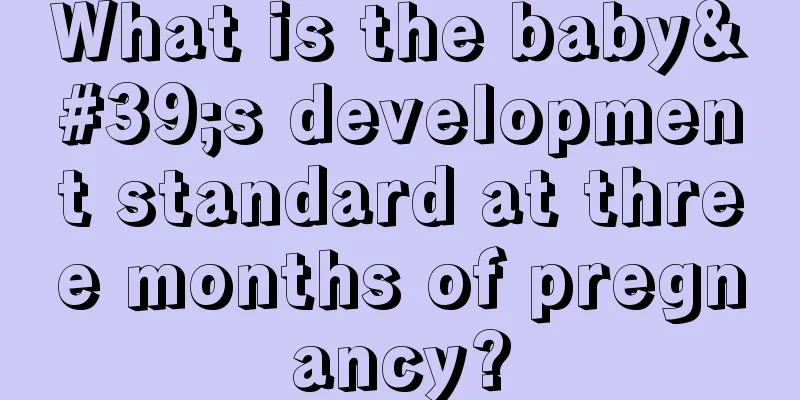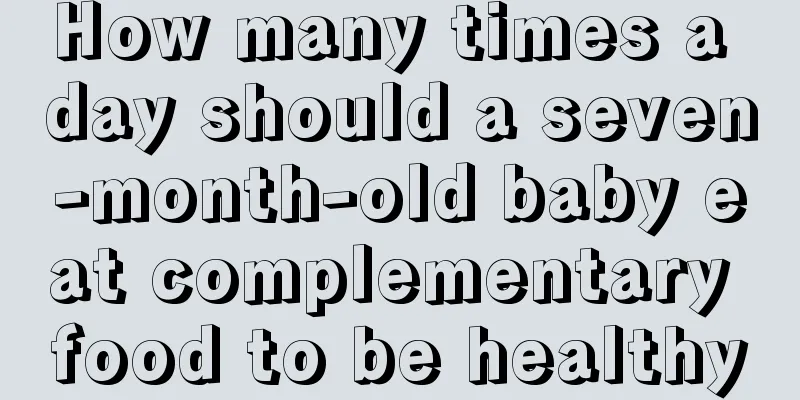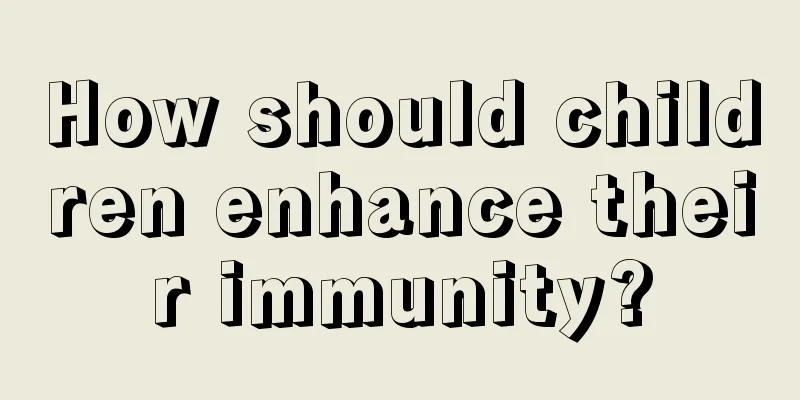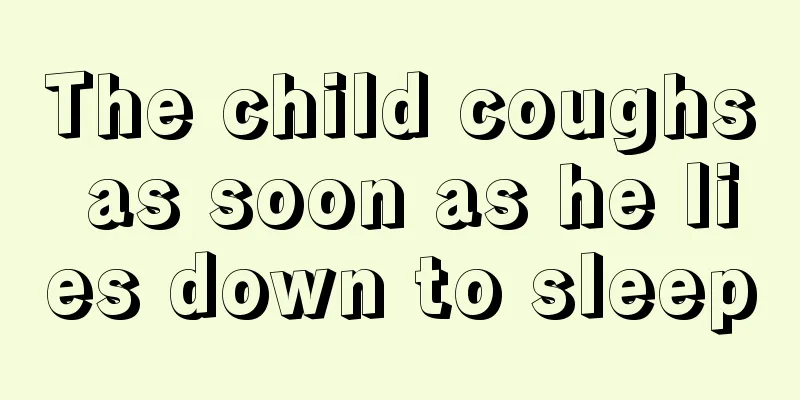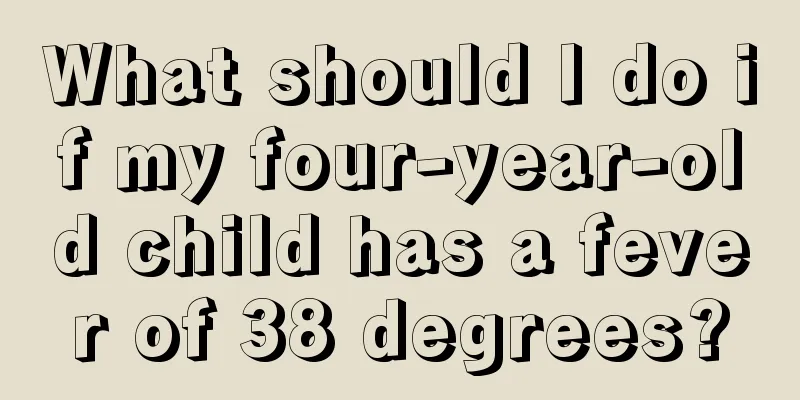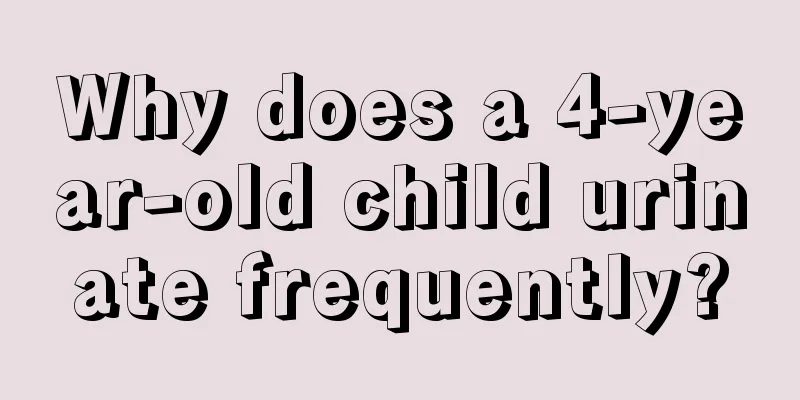At what age do children's teeth begin to change? What should we pay attention to when children’s teeth are changing?
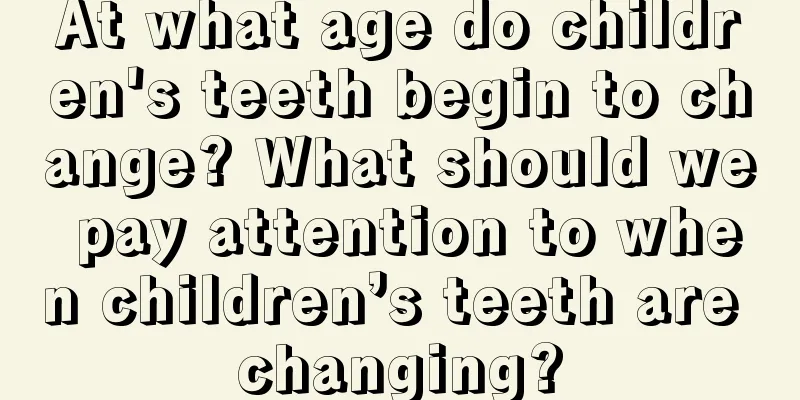
|
Tooth replacement is a process that children must go through in the process of growing up, and it is also a stage that parents must pay great attention to. Because if a child does not change his teeth on time, it means there is a problem with the child's development. In addition, if parents do not take good care of their children during the tooth replacement period, their children's teeth may have various problems. Here we will introduce to you some relevant knowledge about children’s tooth replacement! 1. Tooth replacement time Normally, at the age of 6 to 7, the deciduous central incisor (central front tooth) of the mandible begins to shake and fall out, and soon the permanent central incisor grows in its place; at the same time, the first molar grows behind the second deciduous molar. After that, the other teeth were replaced one after another. The permanent monocuspids and bicuspids can only grow out after the deciduous teeth in the same position fall out. By the age of 12 to 13, all the deciduous teeth have fallen out and have been replaced by permanent teeth. After that, permanent teeth will grow separately: the second molar will grow behind the first molar at the age of 12 to 14, and the third molar will grow after the age of 18. It is normal for some people to not have third molars. The order and timing of tooth replacement are roughly as follows : Number of teeth and time of tooth replacement 4 central incisors 6-7 years old 4 lateral incisors 8-9 years old First pair of canines 4 at 10 years old Single canine 4 11 years old Second canines 4 12 years old First molars 4 at age 6 4 second molars at 13 years old 2. Physiological care during the tooth replacement period 1. Pay attention to whether the deciduous teeth are retained or lost prematurely. There is a certain time and order for the shedding of deciduous teeth. Deciduous teeth that should fall out but don't are called retained deciduous teeth, and the consequence is often that permanent teeth cannot erupt in the normal position. The most common situation is that the lower front permanent teeth grow on the inside of the deciduous teeth, and the upper front permanent teeth grow on the outside of the deciduous teeth, making it look like double teeth. What should we do in this situation? Your child should be taken to the hospital as soon as possible to remove retained deciduous teeth to make room for the permanent teeth to erupt. 2. Pay attention to whether there is difficulty in the eruption of permanent teeth. If the deciduous teeth fall out prematurely, the child will get used to chewing and licking with the gums, which will become thick and tough, hindering the eruption of permanent teeth. Therefore, if your child has reached the age of replacing teeth but the permanent teeth have not yet grown, you should take your child to the hospital for examination in time to get the doctor's help. Calcium deficiency in children is also an important reason for the delayed eruption of permanent teeth. Parents should supplement their children with calcium in time. 3. Pay attention to the cleanliness of your child’s oral cavity. During the tooth replacement period, deciduous teeth and permanent teeth coexist. The permanent teeth have just erupted, especially the "six-year teeth" which are the "key to occlusion". They are large in size and have many pits and fissures on the occlusal surface, which easily retain food residues. In addition, most children do not like to brush their teeth and like to eat sweets, so caries often occur. Once it occurs, it should be treated early. The most important thing at this time is to teach your child to brush their teeth correctly. 4. Pay attention to correcting children’s bad habits. During the tooth replacement period, when the deciduous teeth are loose and about to fall out, children often have the habit of licking the loose teeth with their tongues. This is a bad habit that will affect the normal eruption of permanent teeth and should be corrected in time to prevent malocclusion, that is, uneven teeth arrangement. 5. During the tooth replacement period, children's teeth are replaced, the jaws are developing, and the occlusal relationship is gradually established. Sometimes a temporary misaligned bite will occur, but during the development of the teeth, it can often adjust itself and return to normal. Some malocclusions, such as when the frenulum of the upper lip is too low, causing the gap between the upper front teeth to be too large and cannot be adjusted by itself, will affect facial development. You should go to the hospital for diagnosis and treatment, otherwise it will affect the child's appearance. 3. Dietary precautions As children grow older, they should eat more chewy foods such as jellyfish, peanuts, sugar cane, spiced beans, etc. to maintain a good stimulation effect on the deciduous teeth and promote the shedding of deciduous teeth on time. When the child is about 10 years old, the front incisors and back molars have erupted, and parents can add some celery stalks, corn, apples and other foods to them to ensure a smooth tooth replacement and give the child a healthy and neat permanent tooth. |
<<: What should children pay attention to during chickenpox?
>>: What is the reason why children’s teeth have not grown? How to deal with it?
Recommend
Why does my baby have red spots on his forehead when he cries?
Parents will face various problems in the process...
Parents must know: 8 family education issues determine the life of children
Today, what needs to change the most are parents ...
Symptoms of hemangioma in children
Hemangioma is a very common disease. There are ma...
Treatment of breast hypoplasia in girls
Nowadays, there are more and more female diseases...
Anti-inflammatory drugs for children's pneumonia?
Pneumonia is a very common disease in children. W...
3 major hazards caused by baby powder
Some mothers, after bathing their babies, will ap...
Can babies drink honeysuckle tea?
Many people love to drink honeysuckle tea, especi...
True or false: 8 folk tricks to make your baby beautiful
A baby's appearance is not only determined by...
Can babies eat papaya? Please learn how to eat correctly
Parents must be careful when feeding papaya to th...
Treatment of small pimples on children's hands
Small pimples on children's hands are a relat...
What to do if your baby gets red bumps after eating kiwi fruit
Kiwi fruit is a fruit that can easily cause aller...
What to do if your child has hard stools
The shape of the stool can reflect the child'...
Baby cries after receiving polio vaccine
It will be very painful for the baby when getting...
What is the cause of the black spot in the child's eye?
With the improvement of modern living standards, ...
Two years and two months baby development standard
Although today's young parents don't know...

